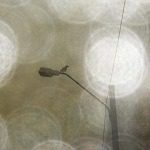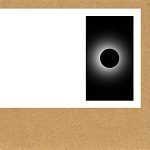Michel Banabila – Gardening
Just when you thought you might have a good overall impression of his work, Banabila manages to present a completely different direction with his latest release: “Gardening“.
Just when you thought you might have a good overall impression of his work, Banabila manages to present a completely different direction with his latest release: “Gardening“.
pal·imp·sest (p l
l
 mp-s
mp-s st
st )n.
)n.
1. A manuscript, typically of papyrus or parchment, that has been written on more than once, with the earlier writing incompletely erased and often legible.
I guess I can safely assume that both Stephan Mathieu and Sylvain Chauveau don’t need any further introduction to readers of this blog.
Also, there’s not very much news in the concept of two artists working together in a digital dialogue, maybe even from different corners of the world. Usually, this means sending back and forth musical ideas – working, remixing, recreating and editing the tracks until they are fit enough to publish.
But not in this particular case!
“Palimpsest” took an unexpected turn when Sylvain Chauveau only added his voice to the tracks presented by Stephan Mathieu – leaving the basic tracks unaltered.
I can vividly imagine Stephan Mathieu’s complete surprise when hearing back his tracks, unaltered, but with the added layer of vocals covering Bill Callahan‘s classic Smog songs.
In december 2010, dutch composer Mendel Kaelen surprised me with his impressive electro-acoustic music on “Remembering What Was Forgotten”.
His new album (his second full-length) “The Tragedy That Drowned Itself” is the debut release of a new UK/NL record label called Sineszi, aiming to publish contemporary electro-acoustic music and sound art.
And quite a promising start that is!
This beautifully coloured digipack release (also available as a fairly priced digital download only) reveals intriguing sounds that are very enigmatic – especially since there’s no mentioning of their origin in the liner notes of the album itself.
“Nonparallel (In Four Movements) is composed and arranged entirely from samples from the recordings of avant-garde Western classical composers and computer music released by the Nonesuch label in the 60s and 70s.”
Just that statement alone should be enough to raise your interest for this new album by Damian Valles, just because of the fact that from the early 60’s, the Nonesuch label has been on the forefront of electronic and avant-garde music – releasing classic titles like Morton Subotnick‘s “Silver Apples of the Moon” and Beaver & Krause‘s “The Nonesuch Guide to Electronic Music”
“In working with the material, Valles wanted to enter into its very lineage, to forge a dialogue with it, to both extrapolate something essential from it and contribute to its legacy by using it to create an original work some three decades later.”
In the Shortlist sections, I will mention some of the albums that I enjoyed listening to, but couldn’t find the time (or the right words) for a “full” review for. Still, I think they deserve your attention: use the links to find more info and hear previews.

Chris Russell – Bloom
A lot of ambient music refers to darkness and gloomy atmospheres, so it’s refreshingly rewarding to find an album like this, an album that finds it inspiration in ‘the power of nature’, especially since it is warm and bright as the pictures accompanying the release, without ever crossing over to the dreaded ‘new age’ territories. “The use of field recordings and electronic atmospheres, along with photos taken from many long hikes in the forest, were the visual back drop to the zones I was creating in the studio. Bloom is a celebration of the awakening and renewal of life..”

Listening Mirror – The Clearing-My Hiding Place
Not much need to refer to the physical release of this 7″ on Cooper Cult, since that was a release of 25 and obviously sold out before I could even play the tracks twice. But, luckily, these beauties are still available as a digital download from BandCamp. Classic Listening Mirror (Jeff Stonehouse) soundscapes: immersive and wide soundscape layers provide the backing for a calm acoustic guitar theme. In some way, the lonely and deserted atmosphere reminded me of the classic Paris, Texas soundtrack by Ry Cooder.
It’s quite hard to keep up with Rutger “Machinefabriek” Zuydervelt’s output. In fact, I could easily publish an entire (sub-)weblog dedicated to his releases.
I really try to avoid returning to the same artists with every new release. But the sheer quality of Rutger Zuydervelt‘s music makes it hard to ignore his newest releases.
Every new release seems to bring a new surprise: an unexpected collaboration, or a kind of special touch that makes his music stand out from the mass of other releases.
It may be hard to keep up, but it’s always very rewarding to check his new releases.
Here’s a pick from the latest batch:
In the Shortlist sections, I will mention some of the albums that I enjoyed listening to, but couldn’t find the time (or the right words) for a “full” review for. Still, I think they deserve your attention: use the links to find more info and hear previews.

Joe Evans – Ecliptic Plane
The liner notes to the tracks are almost scientifical, combining details from mathematics, astronomy, musical theory and sound design. Interesting information for those who want to know about this music’s background, but maybe somewhat overwhelming for the casual listener.
But then: this is not intended as ‘casual’ music!
“While this work deals with some of this familiar subject (space, and more specifically, the sun and planets), it does so with the emphasis on time and particularly by how it is marked by movement within the solar system. The tracks “Ecliptic Plane” and “Resonant TNOs” extensively use the data from the planets, their moons and other objects to create their rhythms and harmonies. In the case of “Resonant TNOs” the musical scale was derived directly from the frequency ratios of the orbits of the titular objects themselves.
Whilst “Approaching/Receding Sun” and “Oort Cloud” are essentially impressionistic in nature, they are the results of mathematical experiments that have links with their subjects through mood and metaphor.“
The result is a fascinating showcase of contemporary electronic music, some of which (especially the opening and closing track “Receding/Approaching Sun” ) would have perfectly fitted the “2001 – A Space Odyssey” soundtrack.

Orphax – Confused
This 30 minute EP took me some time to get used to, because I could not really decide what to think about the loud and rather intrusive opening drone: the sound of the first five-six minutes somehow reminded me of a sustained vuvuzela or bagpipe drone.
So yes, it got me confused indeed. As intended, obviously.
In these first minutes, Amsterdam-based musician Sietse van Erve defines his aural territory, but once the sound has pulled you in the track starts evolving slowly, getting deeper and more fascinating with every introduction of a new layer of sound, created improvising with “guitar, electric toothbrush, razor, vocals and audiomulch”.
I can’t really decide if I should consider Time Released Sound primarily an art or a music label.
I can drool when watching the incredible (handmade!) art that is created for each initial release. Carefully handcrafted, with regards to every detail, but consequently they also carry a price tag that seems to aim at art collectors more than the average music lover.
These special releases are always very limited and often quickly sell out. Luckily for those of us not fast (or rich) enough, Time Released Sound often immediately re-release these titles as a standard 5″-CD with a regular picture sleeve.
Below are some of the highlights of the latest batch: the “Chocolate Box” series. This, of course, refers to the Deluxe packaging of each individual title. Check the website for more details about that: I’ll leave out the notes about the packaging and will just focus on the music.
It’s an interesting aside that the two masters of deep drone, some of the very few artists able to create soundscapes that seem to span the complete universe – Thomas Köner and Sleep Research Facility – release their new album in the same month.
Five years after his latest album, Deep Frieze, and eleven years after his legendary landmark debut Nostromo, Sleep Research Facility (Kevin Doherty from Glasgow, Scotland) returns with “Stealth“.
And, like watching the universe at night, the overall view of this album may seem the same – but the difference is in the details.
And the longer you watch, the more details you will see.